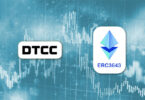London-based startup Clearmatics is running an enterprise blockchain hackathon hosted by Barclays. It aims to find the best applications for its interoperability protocol Ion, particularly for Hyperledger Fabric and Ethereum to communicate. The hackathon is being held at the Barclays fintech hub Rise in London on 5-6 February. Barclays previously hosted a popular hackathon to explore the use of ISDA’s new derivatives standard for blockchain applications.
Many financial and enterprise applications are being built on a handful of blockchain protocols: Ethereum, Hyperledger Fabric, Corda, Digital Asset and MultiChain. The concern is that blockchain networks will create large silos of data. For example, there are a number of trade finance blockchain networks. And they need to both talk to each other and talk to the supply chain networks targeted at specific industries.
Utility Settlement Coin’s interoperability need
In Clearmatic’s case, they’re the technology team behind the Utility Settlement Coin (USC) which was jointly conceived with UBS back in 2016 and is expected to launch this year. The project is for an institutional stable coin backed by central bank deposits and involves 17 major financial institutions.
Although the group has since expanded, the last publicly announced list of participants was Barclays, BNY Mellon, Canadian Imperial Bank of Commerce, Credit Suisse, Deutsche Bank, HSBC, ICAP, MUFG, NEX, Santander, State Street and founder UBS.
The coin should be able to be used for payment on any type of network. Hence the USC blockchain needs to interoperate with a wide variety of enterprise blockchains based on different technologies.
By enabling trading of a tokenized asset – such as a stock, bond or derivative – in exchange for digital currency, immediate settlement finality can be achieved, referred to as delivery versus payment (DvP). Because there’s no waiting for payment there’s no risk of non-performance. The removal of the counterparty risk reduces the need for the intermediaries that act as financial market central counterparties.
Similarly, a coin in one currency could be instantaneously swapped for another currency – payment versus payment (PvP). In both cases where a tokenized asset or one digital currency is exchanged for another digital currency, you need to have an atomic swap. So if one side of the transaction fails, both sides must fail.
Ion and the interoperability challenge
Hence Clearmatics developed the Ion framework to enable cross chain atomic swaps and decentralized exchanges. The Ion source is on Github, and the company has written extensively about the protocol on its blog. The startup has already tested it with fellow fintech Axoni which like Clearmatics uses Ethereum’s technology.
In one of its blog posts, Clearmatics acknowledges the contributions that interoperability solutions Polkadot and Cosmos have made but says “their focus on public chains means that they are not always directly transferable into the setting of permissioned chains.” The developers of Cosmos were behind one of the very first permissioned blockchains, Tendermint.
Other permissioned interoperability approaches exist. There’s the Corda Network which enables interoperability with other Corda-based DLTs, but not other technologies. The Hyperledger initiative has the Hyperledger Quilt project. Accenture has implemented a solution that uses a trusted “interoperability node”, a centralized solution which may work for some applications but may be unpalatable for a project like USC.
Many “Band-Aid” integration approaches involve APIs or multiple levels of blockchains. Hence more work is still needed, and Clearmatics emphasizes that Ion is platform agnostic.
The hackathon
But despite Ion being platform agnostic, Clearmatics is especially keen to hear from teams that are looking to get Hyperledger Fabric and Ethereum to talk to each other. Late last year Hyperledger announced that Ethereum smart contracts had been integrated into Hyperledger Fabric. That makes interoperability between these two blockchains slightly lower hanging fruit.
However, it’s unlikely Clearmatics will turn away teams that are willing to explore interoperability with other enterprise blockchain technologies though the task may be beyond a hackathon timeframe.
One thing that participants might want to know is who will own the hackathon code? So far Clearmatics hasn’t responded to Ledger Insight’s query. The Ion Framework code, like large parts of Ethereum, uses the GPL 3 license. That’s less permissive compared to the Apache 2 license favored by enterprises and used by Hyperledger Fabric and Corda.
While Clearmatics has a strong motivation for Ion adoption to aid the USC project, the bigger picture is enterprise blockchain interoperability is critical. The more minds that are focused on the problem, the better.
The hackathon sign up is on Eventbrite.






